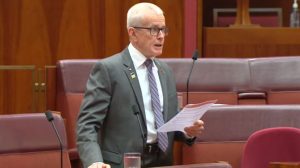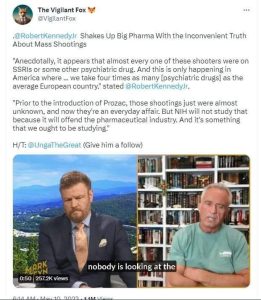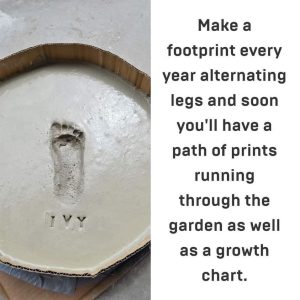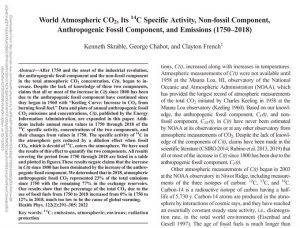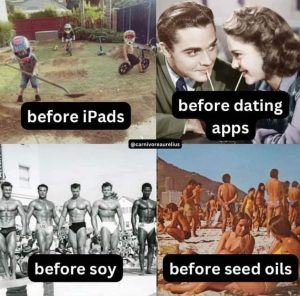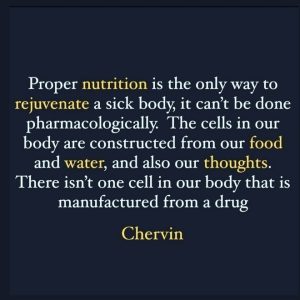STORY AT-A-GLANCE
Discarded plastics make up 18.5% of landfills and 90% of all trash entering the world’s oceans. Estimates suggest that by 2050, our oceans will contain more plastic than fish by weight. In some ocean waters, plastic already exceeded plankton by a factor of 6-to-1 in 2006
Recent animal research found plastic particles in mice’s brains just two hours after the animals ingested drinking water containing microplastics
Scientists suspect microplastic contamination in our brains may cause cognitive impairment, neurotoxicity and altered neurotransmitter levels, which can contribute to behavioral changes
Similarly, a Chinese study published in January 2022 concluded that inhaled plastic was associated with “obvious neurotoxicity”
The plastics industry sold consumers on the idea that plastic was recyclable and therefore sustainable even though they knew it was financially unfeasible. Consumers were also deceived by the addition of recycling codes on plastic products. The code makes it seem as though all plastic is recyclable, which isn’t true
We live in a throwaway society, and products intended for short-term consumption are packaged in materials that will survive for centuries. Discarded plastics make up 18.5% of landfills1 and 90% of all trash entering the world’s oceans.2
At the rate we’re going, estimates suggest that by 2050, our oceans will contain more plastic than fish by weight.3 In some ocean waters, plastic already exceeded plankton by a factor of 6-to-1 in 2006.4
The problem with plastic is that it doesn’t biodegrade; it photodegrades, which takes hundreds of years. Researchers estimate a single plastic coffee pod may take up to 500 years, the duration of the Roman Empire.5 Even as it breaks down, it doesn’t completely vanish. Instead, it turns into tiny plastic particles, commonly referred to as “nurdles,” which act like sponges for toxic chemicals.6
These particles are routinely consumed by filter feeders in the ocean, slowly poisoning them and causing blockages. As these filter feeders are consumed by larger creatures, the toxins move up the food chain, ultimately ending up in our own bodies. Plastic chemicals also enter our bodies through other routes, including drinking water.
Plastic in Water Can Enter Your Brain
As reported by The Guardian May 1, 2023:7
“Researchers at the University of Vienna have discovered8,9 particles of plastic in mice’s brains just two hours after the mice ingested drinking water containing plastic. Once in the brain, ‘Plastic particles could increase the risk of inflammation, neurological disorders or even neurodegenerative diseases such as Alzheimer’s or Parkinson’s,’ Lukas Kenner, one of the researchers, said in a statement …
[The] researchers also believe that microplastic contamination in our brains can cause short-term health effects such as cognitive impairment, neurotoxicity and altered neurotransmitter levels, which can contribute to behavioral changes. The team gave mice water laced with particles of polystyrene — a type of plastic that’s common in food packaging such as yogurt cups and Styrofoam takeout containers.
Using computer models to track the dispersion of the plastics, researchers found that nanoplastic particles — which are under 0.001 millimeters and invisible to the naked eye — were able to travel into the mice’s brains via a previously unknown biological ‘transport mechanism.’
Essentially, these tiny plastics are absorbed into cholesterol molecules on the brain membrane surface. Thus stowed away in their little lipid packages, they cross the blood-brain-barrier — a wall of blood vessels and tissue that functions to protect the brain from toxins and other harmful substances.”
You Breathe and Eat Plastic Too
Other studies have demonstrated that inhaled plastic can enter your brain as well. For example, a Chinese study10 published in January 2022 concluded that inhaled plastic was associated with “obvious neurotoxicity.”
More specifically, the plastic nanoparticles reduced function of brain enzymes known to malfunction in Parkinson’s and Alzheimer’s patients. As such, inhaled plastic may contribute to or exacerbate these conditions.
Your health, including the function of your brain, is also largely dependent on your gut health and the function of your mitochondria, and plastic wreaks havoc there as well.
A January 2023 study11 from Finland found that high doses of microsized polyethylene decreased cell viability and increased production of harmful reactive oxygen species (ROS) in the mitochondria, which is where most of your body’s energy is produced.
How Microplastics Get Into Meat and Milk
In 2022, Dutch scientists confirmed the presence of microplastics in meat, milk and the blood of both farm animals and humans.12,13 In all, nearly 80% of meat and dairy products tested were found to contain microplastics, including 5 in 8 pork samples and 18 in 25 milk samples. As reported by the Plastic Soup Foundation, which commissioned the testing:14
“The possible cause could be the feed of cows and pigs: all 12 samples of feed pellets and shredded feed were found to contain plastic … Maria Westerbos, director of Plastic Soup Foundation, said, ‘This study raises serious concerns about the contamination of our food chain with microplastics.
It is also clear that farmers are not responsible for this. It seems that at least part of the former food products, including from supermarkets, are processed into livestock feed with packaging and all …
The European Animal Nutrition Regulation 767/2009 prohibits the addition of ‘packaging and parts of packaging derived from the use of food industry products.’ This regulation should be enforced, according to Plastic Soup Foundation.
However, the Dutch Food and Consumer Product Safety Authority (NVWA) uses a so-called Reference Point of Action; contamination below 0.15% is tolerated.”
The very idea that food scraps used to make animal feed would be processed with plastic food packaging left on is shocking beyond belief. Who in their right mind would think of doing such a thing? Yet apparently, that is happening, and is common enough that the EU has regulations for it.
Microplastics Found Everywhere
In the study above, 100% of swine and cows had microplastics in their blood.15 In humans, plastic particles have been found in the blood of 77% of people tested.16 The mean concentration of plastic particles in the blood was 1.6 µg/ml.17
Some of the blood samples contained up to three different types of plastic; steel syringe needles and glass tubes were used so no plastic would be introduced to the samples.18 Of the 17 samples in which plastic particles were detected:19
Half contained polyethylene terephthalate (PET) plastic, which is used to make plastic water and soda bottles
One-third contained polystyrene, widely used in food packaging
One-quarter contained polyethylene, which is used to make plastic bags
Previous studies have also detected microsized plastic particles in human feces and placental tissue,20 so we know the plastic is migrating throughout the human body. Disturbingly, infants have up to 10 times more plastic in their feces than adults.
Effects of exposure to microplastics in utero include reduced fetal and placental weight, coronary dysfunction, vascular perturbations, negative reproductive health outcomes and neurological dysfunction.
Animal studies have also confirmed the dispersion and accumulation of plastic inside the body. For example, in one study, pregnant rats were exposed, via the lungs, to 20?nm nanopolystyrene beads. Twenty-four hours later the particles were found in the mother’s lung, heart, spleen and placenta, as well as the liver, lungs, heart, kidney and brain of the fetus.21
Effects of this exposure in utero included reduced fetal and placental weight, coronary dysfunction, vascular perturbations, negative reproductive health outcomes and neurological dysfunction in the offspring. Is there any reason to believe the same won’t be true for human babies?
You Consume More Plastic Than You Realize
According to Australian research,22 the average person consumes about 5 grams of plastic per week — about the amount found in one credit card — so we’re not even talking about minuscule amounts anymore. Clearly, the potential for catastrophic biological consequences for humans is growing with every discarded piece of plastic.
Many plasticizing chemicals are similar in structure to natural hormones such as the female sex hormone estrogen, the male sex hormone androgen and thyroid hormones. As such, they interfere with development, reproduction, neurological functioning, metabolism, satiety, and immune function, and for many of these chemicals, there may be no safe level of exposure.
Bisphenol-A (BPA), for example, is known to disrupt embryonic development and has been linked to heart disease and cancer. Phthalates dysregulate gene expression and can trigger heart disease and cause genital anomalies — especially in baby boys — that may pass down several generations. DEHP is associated with reduced sperm count and multiple organ damage.
DARPA Pushing More Plastic in the Food Supply
As if the situation weren’t dire enough, in September 2020, the U.S. Defense Advanced Research Projects Agency (DARPA) has awarded Iowa State University and partners a $2.7 million grant to create a process that would make FOOD from plastic and paper waste!23
The intention is to use this to feed the military men and women who have dedicated their lives to defending this country. They believe the ability to turn paper and plastic waste products into consumables could help with short-term “nourishment” and improve military logistics for extended missions.
They estimate the total award could reach $7.8 million before the project ends. Other partners in this project include the University of Delaware, Sandia National Laboratories, and the American Institute of Chemical Engineering (AIChE)/RAPID Institute.
Basically, what they’re trying to do is convert plastic waste into fatty alcohols and fatty acids, while paper waste will be turned into sugar. These base ingredients will then be bioprocessed by single-cell organisms into an, allegedly, edible mass that is rich in protein and vitamins.
In other words, the hope is that microorganisms can convert the endocrine-disrupting chemicals found in plastic into essential vitamins and proteins. I don’t know about you, but this sounds like a beyond terrible idea. DARPA has also awarded Michigan Tech researchers $7.2 million to turn plastic waste into protein powder, again using microorganisms.24
While DARPA is supposedly focusing on turning toxic plastics into “food” for the U.S. military, considering we’re now in an era where synthetic, lab-created meat is valued over regeneratively grown real meat, it’s not farfetched to imagine that the next step will be plastic-derived food for all.
Plastic Recycling Was Always a Fraud
One of the selling points that got the world hooked on plastic was that it could be recycled. As reported by NPR in September 2020:25
“Laura Leebrick, a manager at Rogue Disposal & Recycling in southern Oregon, is standing on the end of its landfill watching an avalanche of plastic trash pour out of a semitrailer … None of this plastic will be turned into new plastic things. All of it is buried …
But when Leebrick tried to tell people the truth … people didn’t want to hear it. ‘I remember the first meeting where I actually told a city council that it was costing more to recycle than it was to dispose of the same material as garbage,’ she says, ‘and it was like heresy had been spoken in the room: You’re lying. This is gold. We take the time to clean it, take the labels off, separate it and put it here. It’s gold. This is valuable.’
But it’s not valuable, and it never has been. And what’s more, the makers of plastic — the nation’s largest oil and gas companies — have known this all along …
NPR and PBS Frontline spent months digging into internal industry documents and interviewing top former officials. We found that the industry sold the public on an idea it knew wouldn’t work — that the majority of plastic could be, and would be, recycled — all while making billions of dollars selling the world new plastic …
[T]he industry spent millions telling people to recycle, because, as one former top industry insider told NPR, selling recycling sold plastic, even if it wasn’t true … Documents show industry officials knew this reality about recycling plastic as far back as the 1970s.”
Propaganda Misled Consumers to Accept Plastic
Since the earliest days of recycling, less than 10% of the plastic produced has ever been recycled, but you wouldn’t know that based on what the industry has said due to their highly effective propaganda campaigns based on absolute fraud.
In the late 1980s, the reality of plastic waste was becoming known and the public was expressing concerns about the environmental impact. Legislators were considering bans on the use of plastics. The plastic industry was in turmoil, trying to figure out how to stay in business as plastic was getting a bad rap.
The solution they came up with was, as usual, propaganda. In 1989, the plastics industry launched a $50 million-a-year ad campaign to promote the alleged benefits of plastic.
That same year, the industry also launched several feel-good recycling projects. “It funded sorting machines, recycling centers, nonprofits, even expensive benches outside grocery stores made out of plastic bags,” NPR writes, but by the mid-1990s, all of these projects had failed and been shuttered due to economics.
Recycling was simply too expensive. It’s far cheaper to make new things and bury the old. Over time, public concern mellowed and vanished. According to one trade group official, it seemed “the message that plastic could be recycled was sinking in.” The industry crisis passed.
Recycling Codes Became a Greenwashing Aid
In the early 1990s, the industry started lobbying states to mandate recycling symbols on all plastic products. Environmentalists who supported this plan were under the impression that it would help consumers separate the plastic, thereby making recycling a bit more affordable.
There are hundreds of plastics and they cannot be processed together. Some cannot be recycled at all. The recycling symbols were supposed to make separation easier, but all it did was confuse consumers into thinking that ALL plastic with a symbol could be recycled, thereby making matters worse.
Recyclers ended up with tons of unrecyclable plastics thrown in. Not only did they now have to spend more money on sorting, but getting rid of the unrecyclable plastic also ate into their already negligible profits. While this end result might not have been intentional, the plastics industry certainly was aware that it hurt the recycling industry more than anything.
In a 1993 report, a D.C. lobbying group flatly admitted the codes were being misused. “Companies are using it as a ‘green’ marketing tool,” the report said. In short, the industry knew the codes printed on the bottom would mislead consumers into thinking all plastic was recyclable, as virtually no one took the time to memorize each code.
Reduce Your Dependency on Plastic
It can be extraordinarily difficult to avoid plastic, considering most food and consumer goods are enshrined in plastic packaging. However, you can certainly minimize your dependency on these products. For example, consider:
Opting for products sold in glass containers rather than plastic whenever possible.
Looking for plastic-free alternatives to common items such as toys and toothbrushes.
Choosing reusable over single-use — This includes nondisposable razors, washable feminine hygiene products for women, cloth diapers, glass bottles for your beverages, cloth grocery bags, handkerchiefs instead of paper tissues, and using an old T-shirt or rags in lieu of paper towels.
Drinking filtered tap water rather than bottled water, and bringing your own refillable bottles when going out.
Buying glass food storage containers rather than plastic ones.
Bringing your own reusable cloth shopping bags.
Bringing your own glass dish for leftovers when eating out.
Skipping the plastic cutlery and using your own silverware when buying take-out.
From: https://articles.mercola.com/sites/articles/archive/2023/05/11/plastic-in-the-brain.aspx
